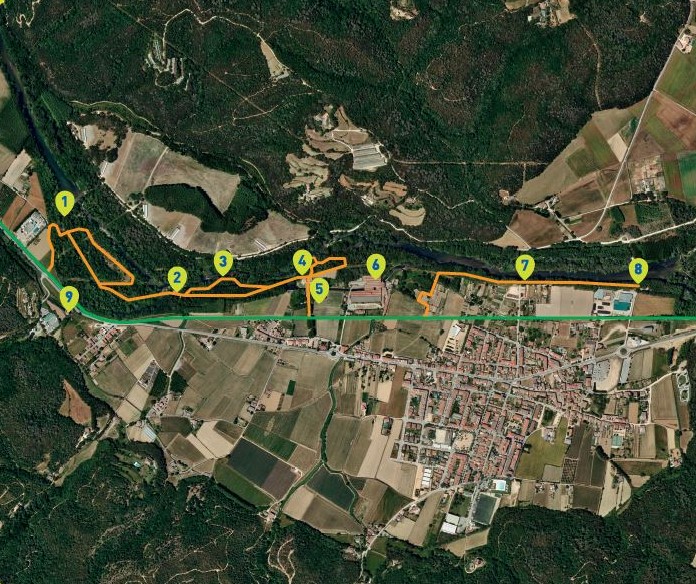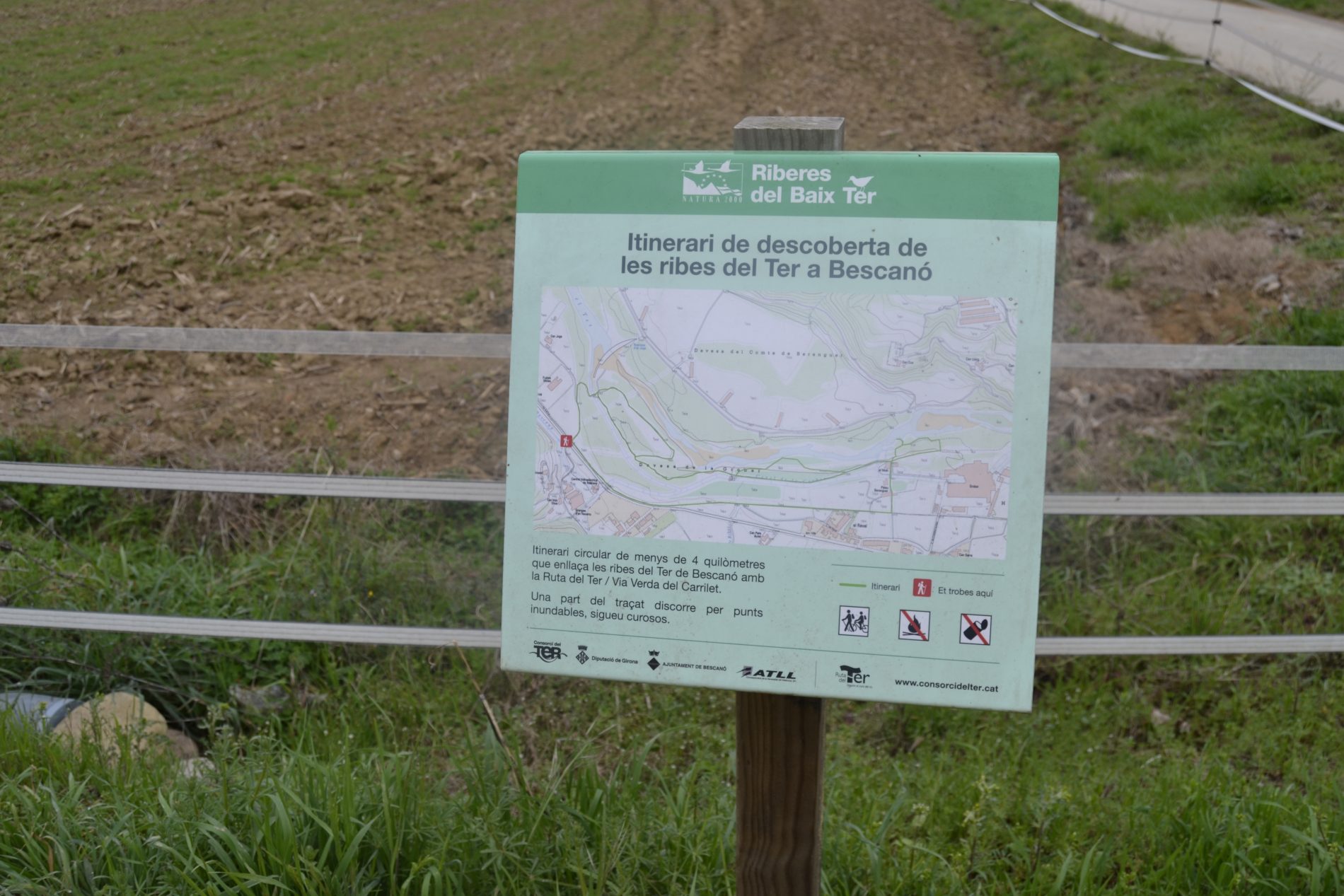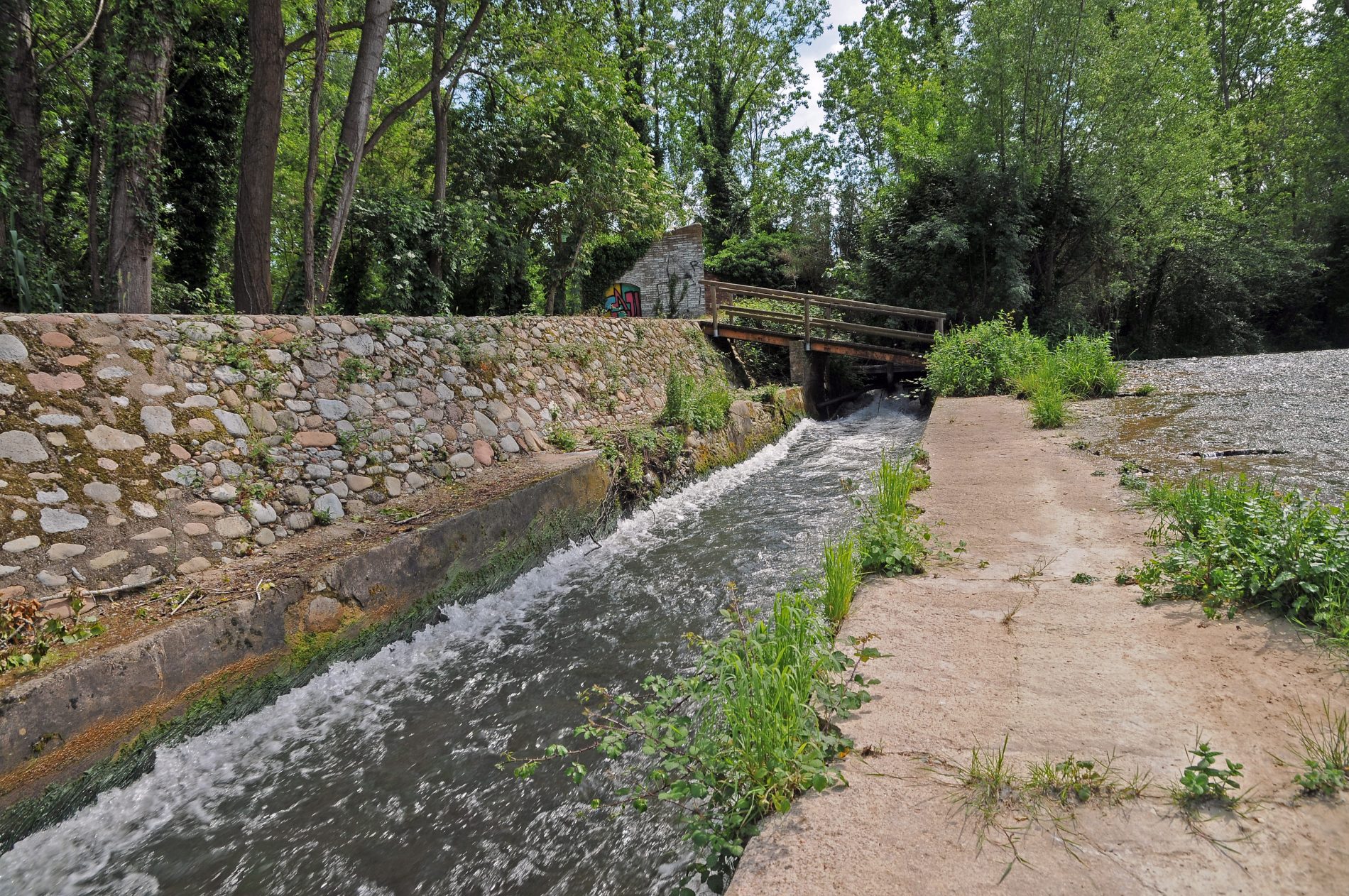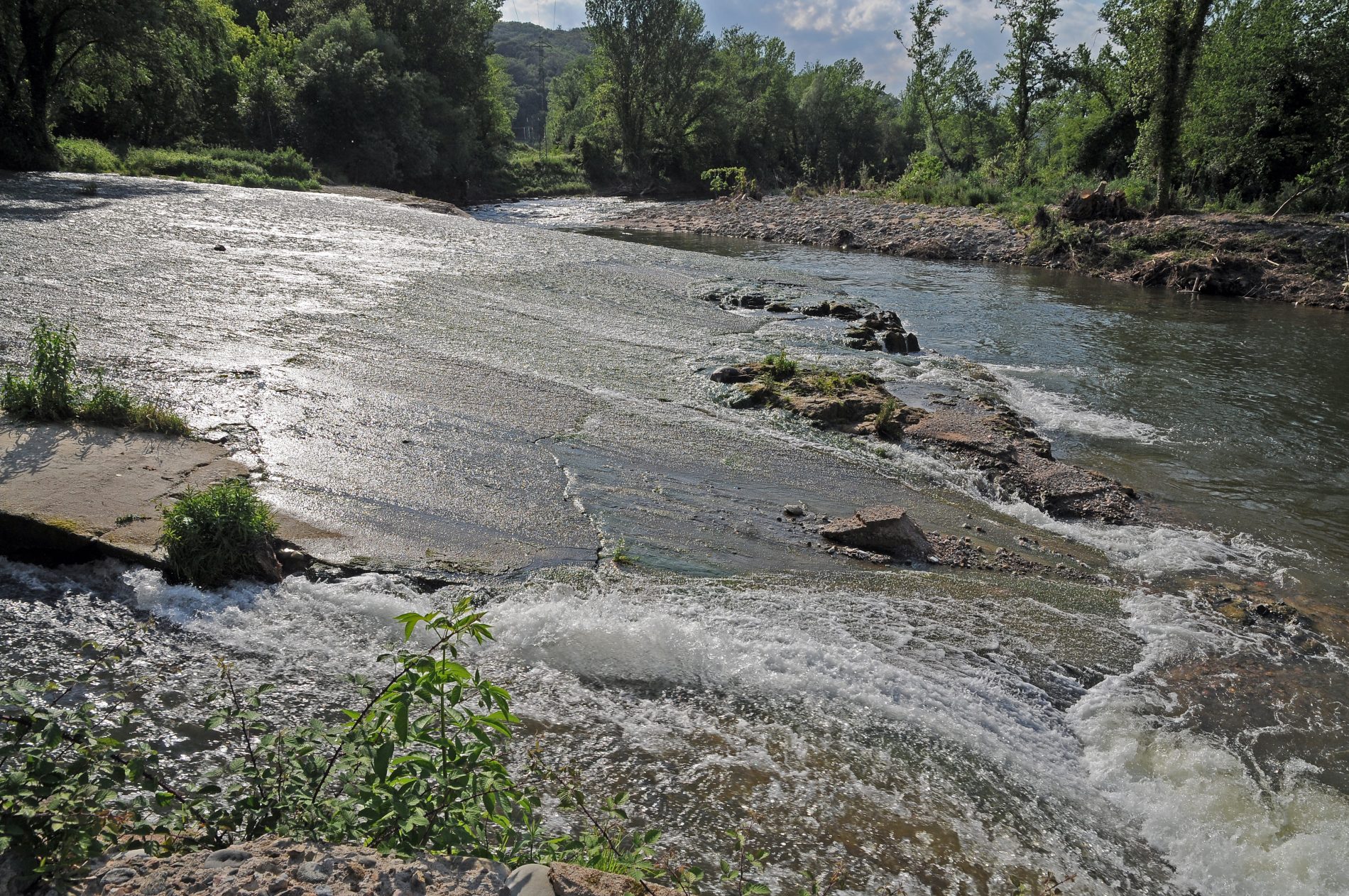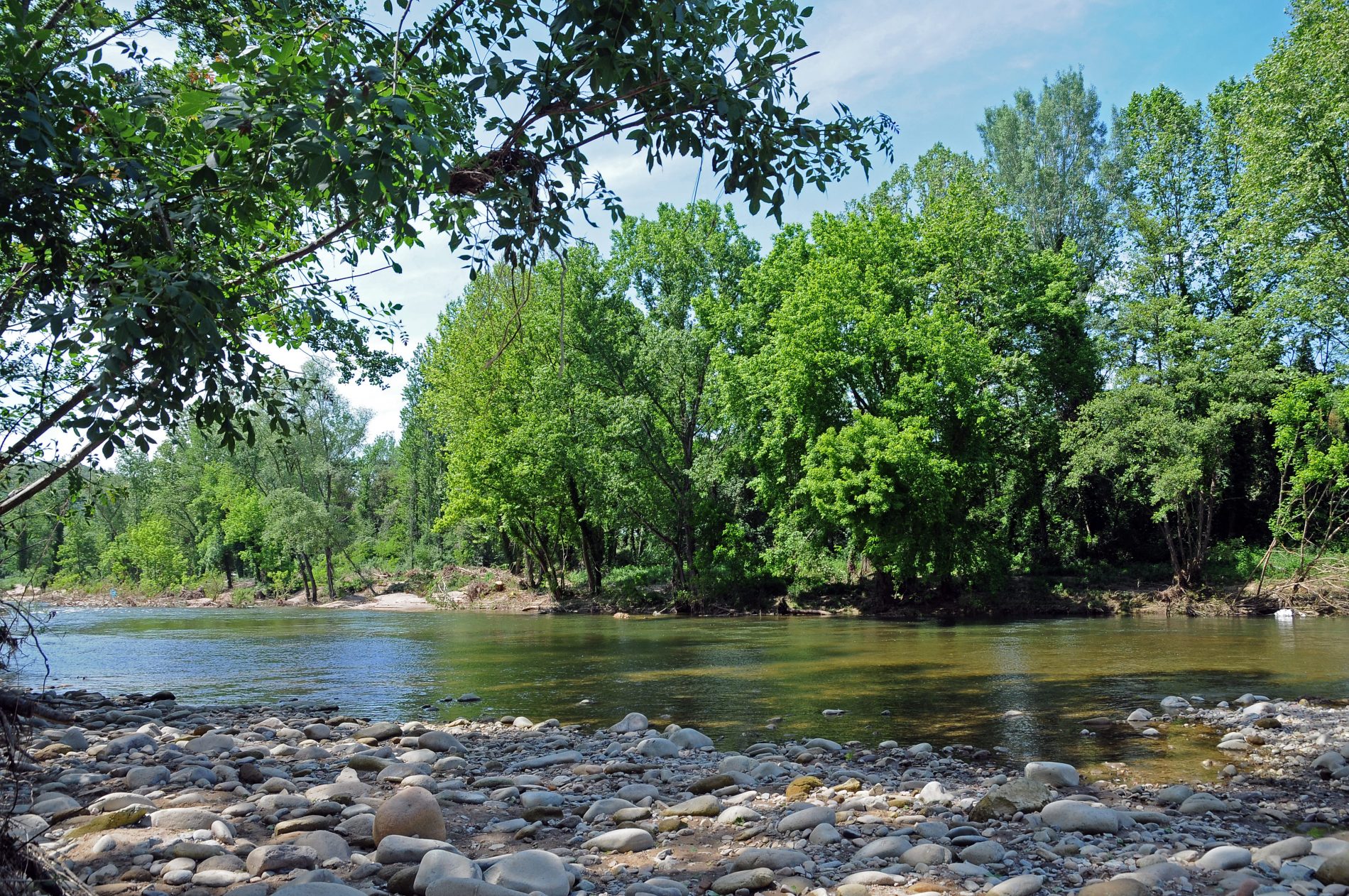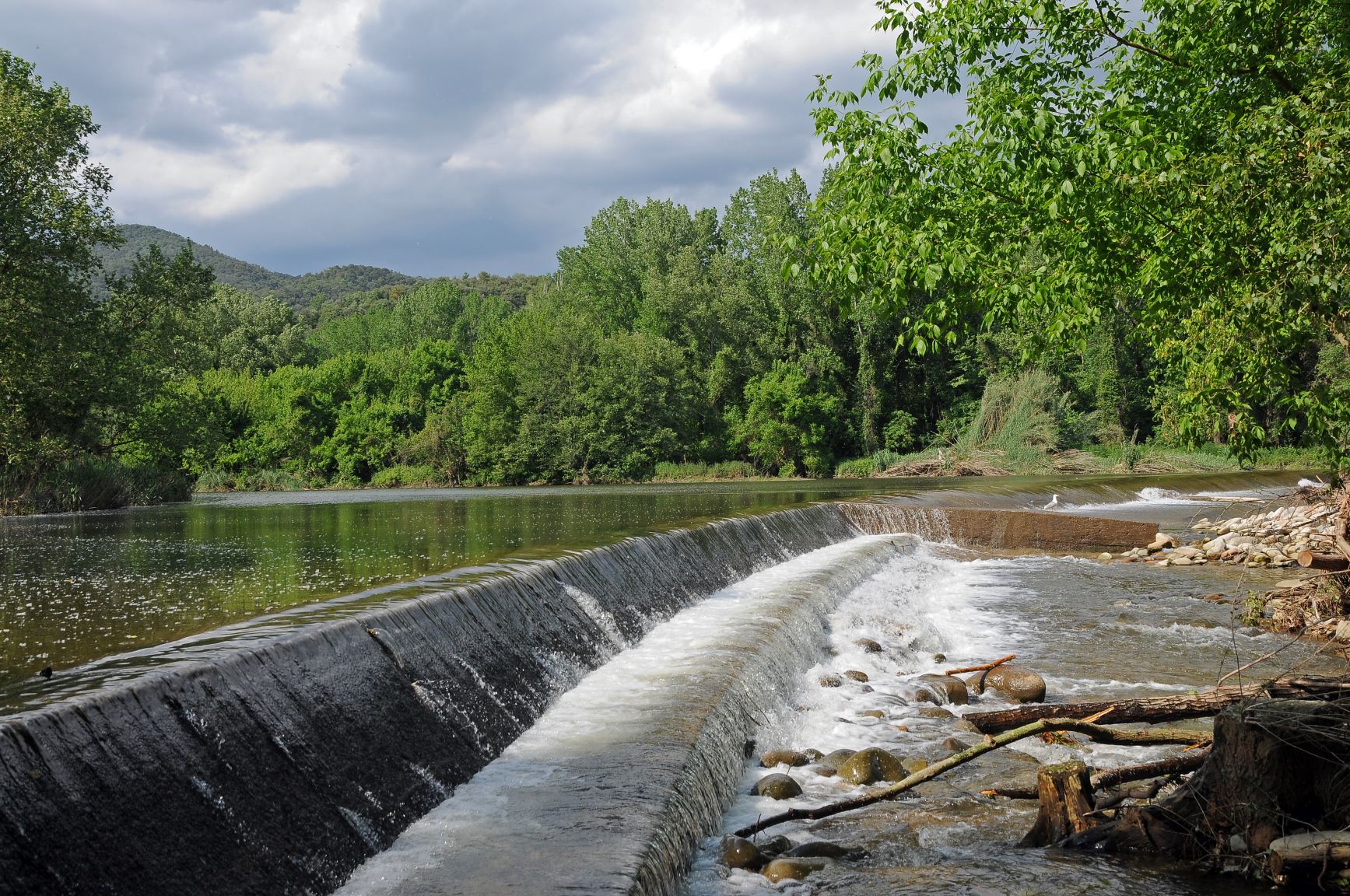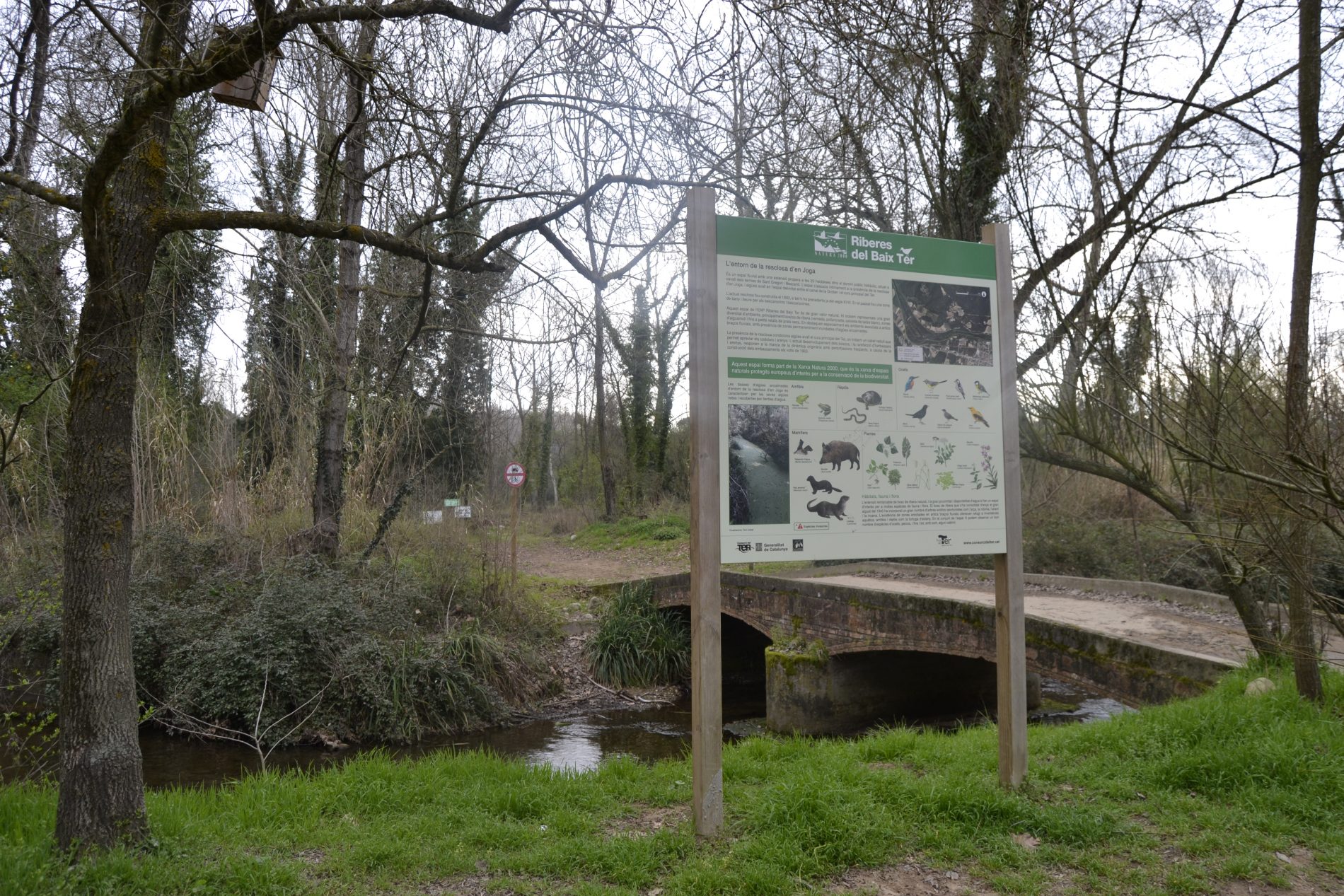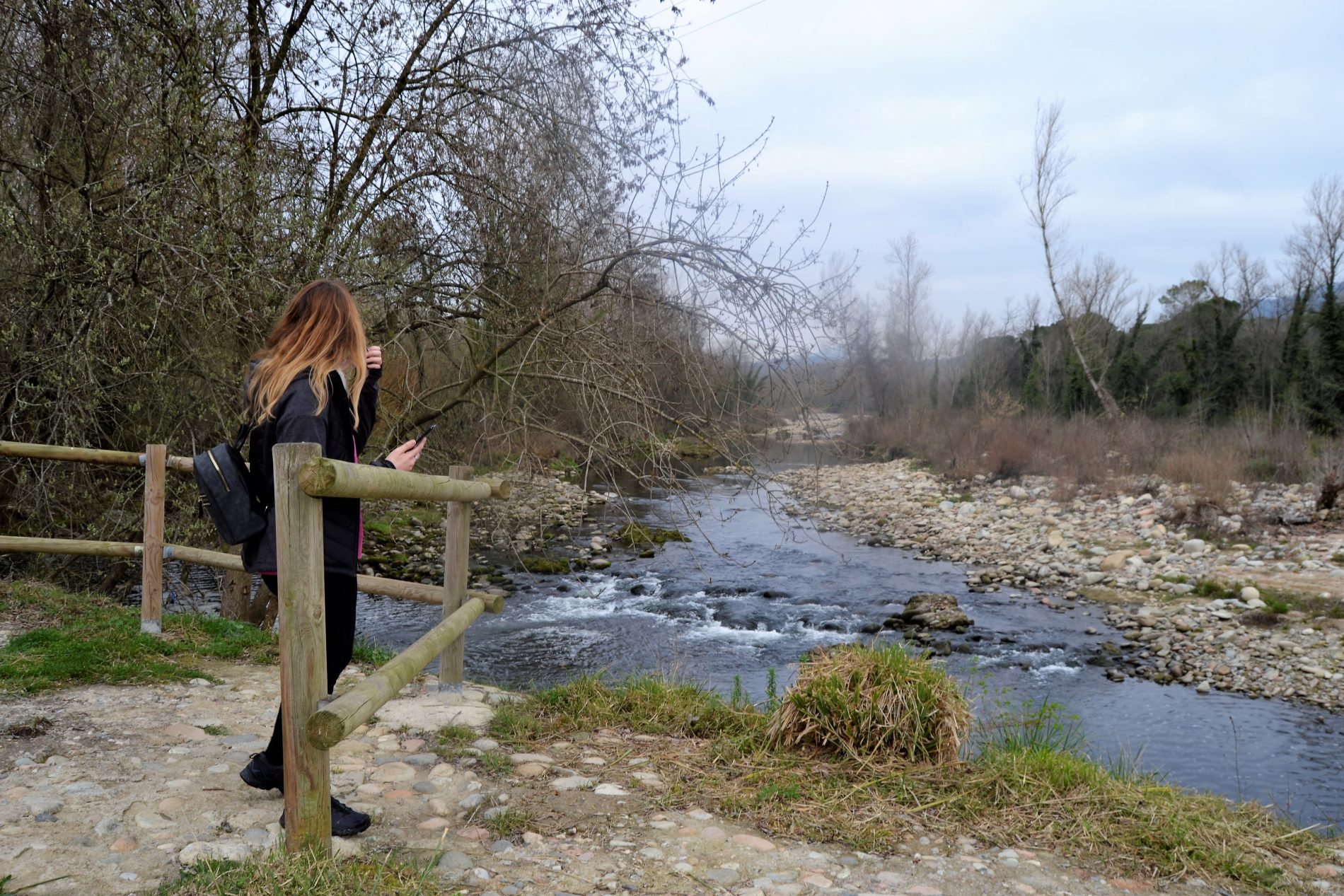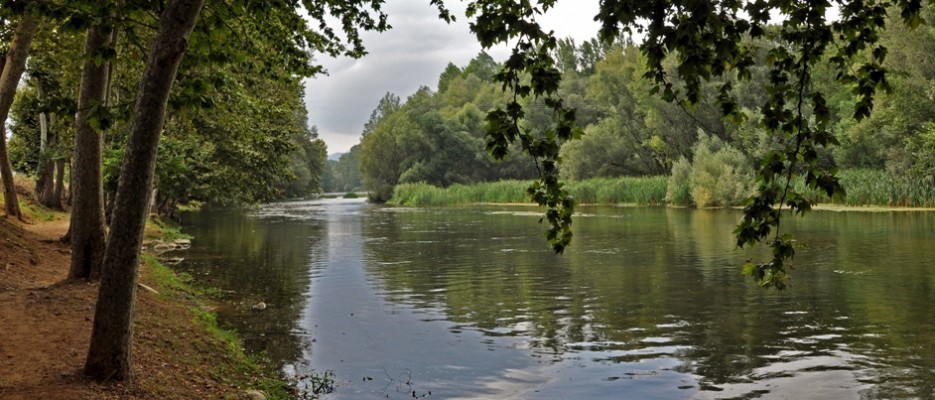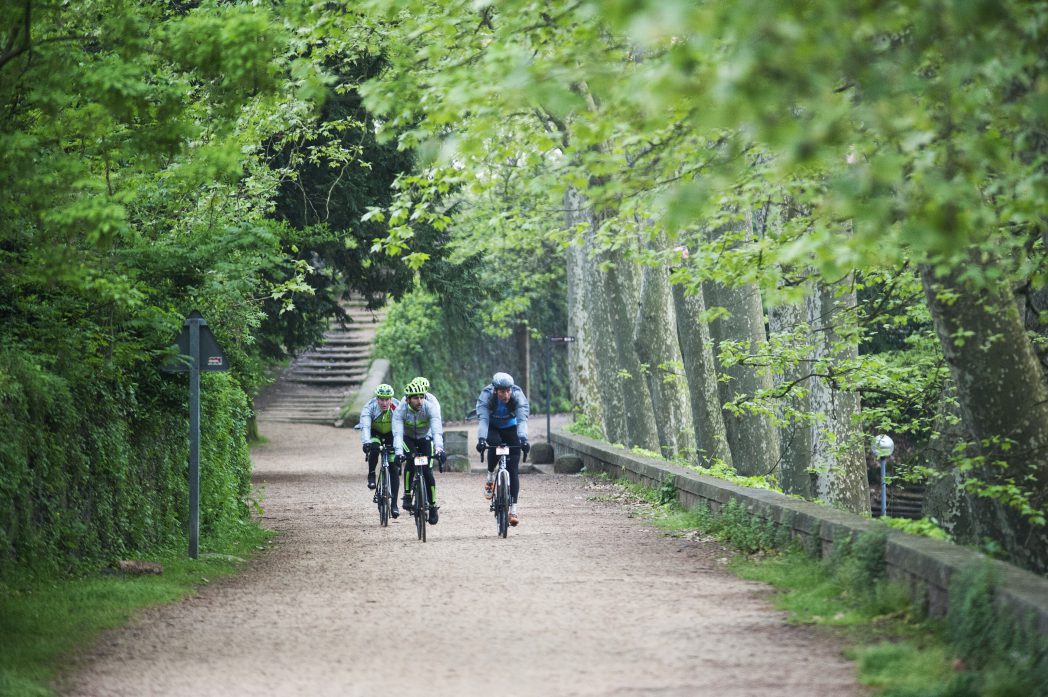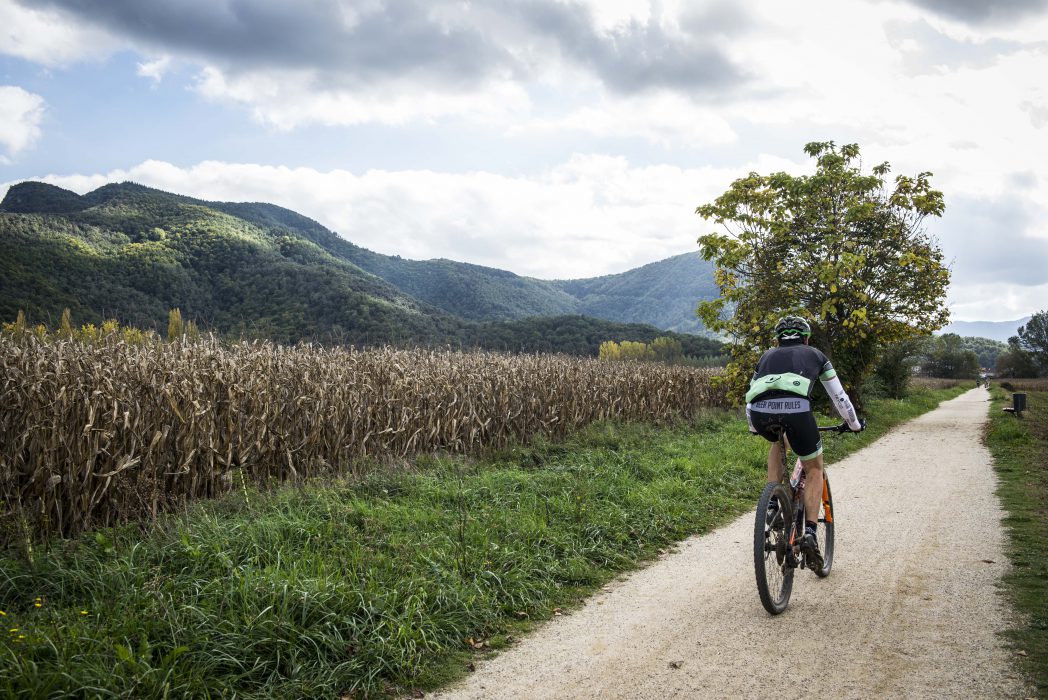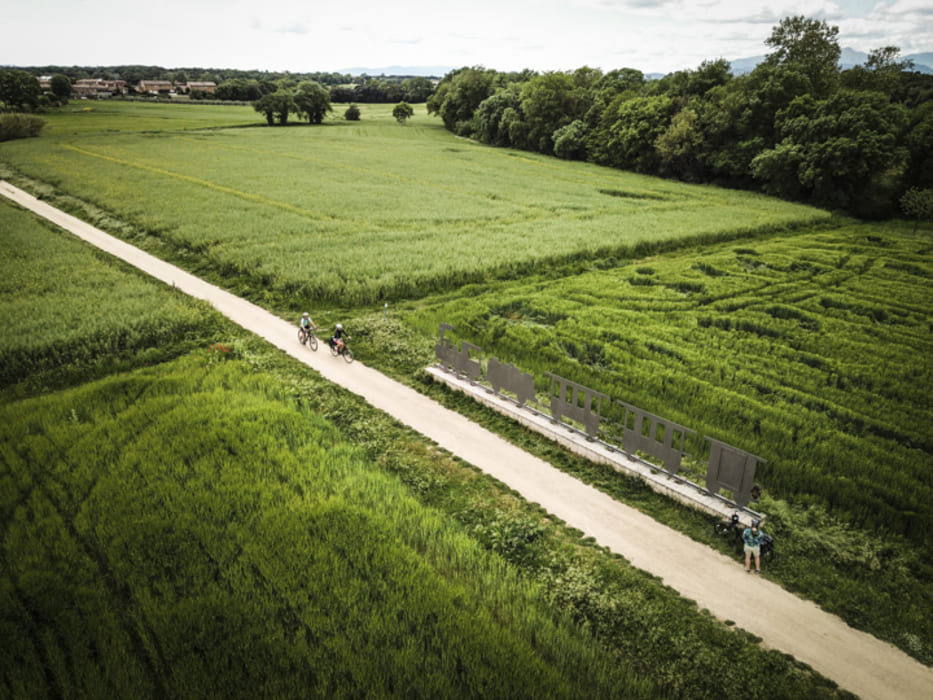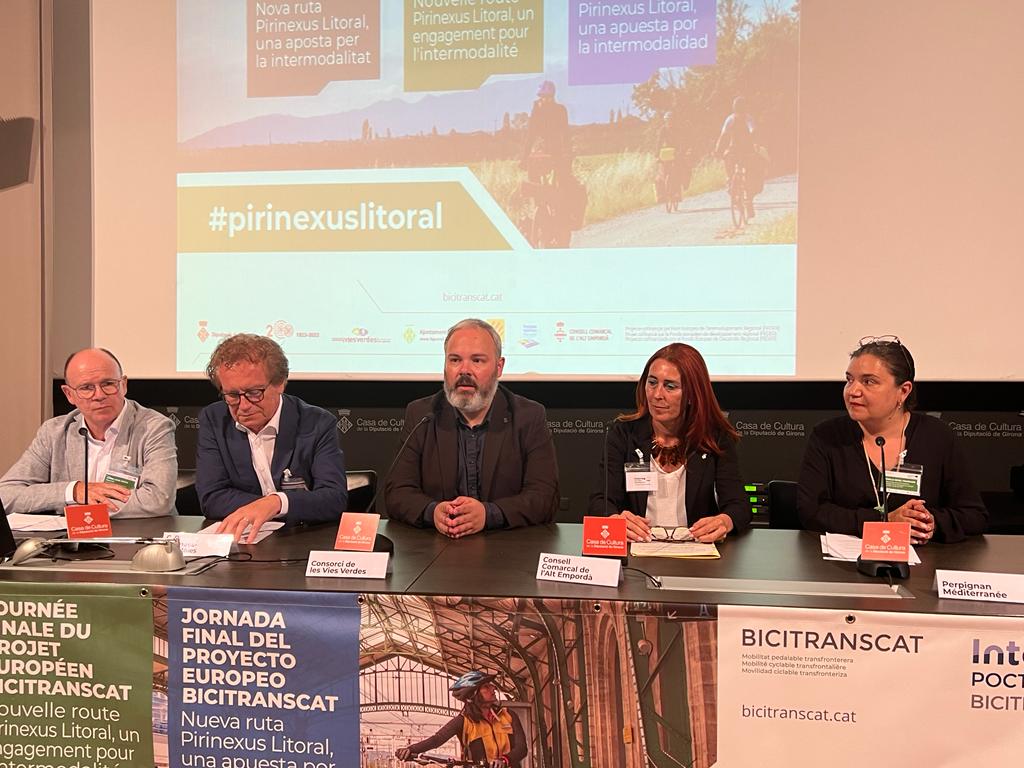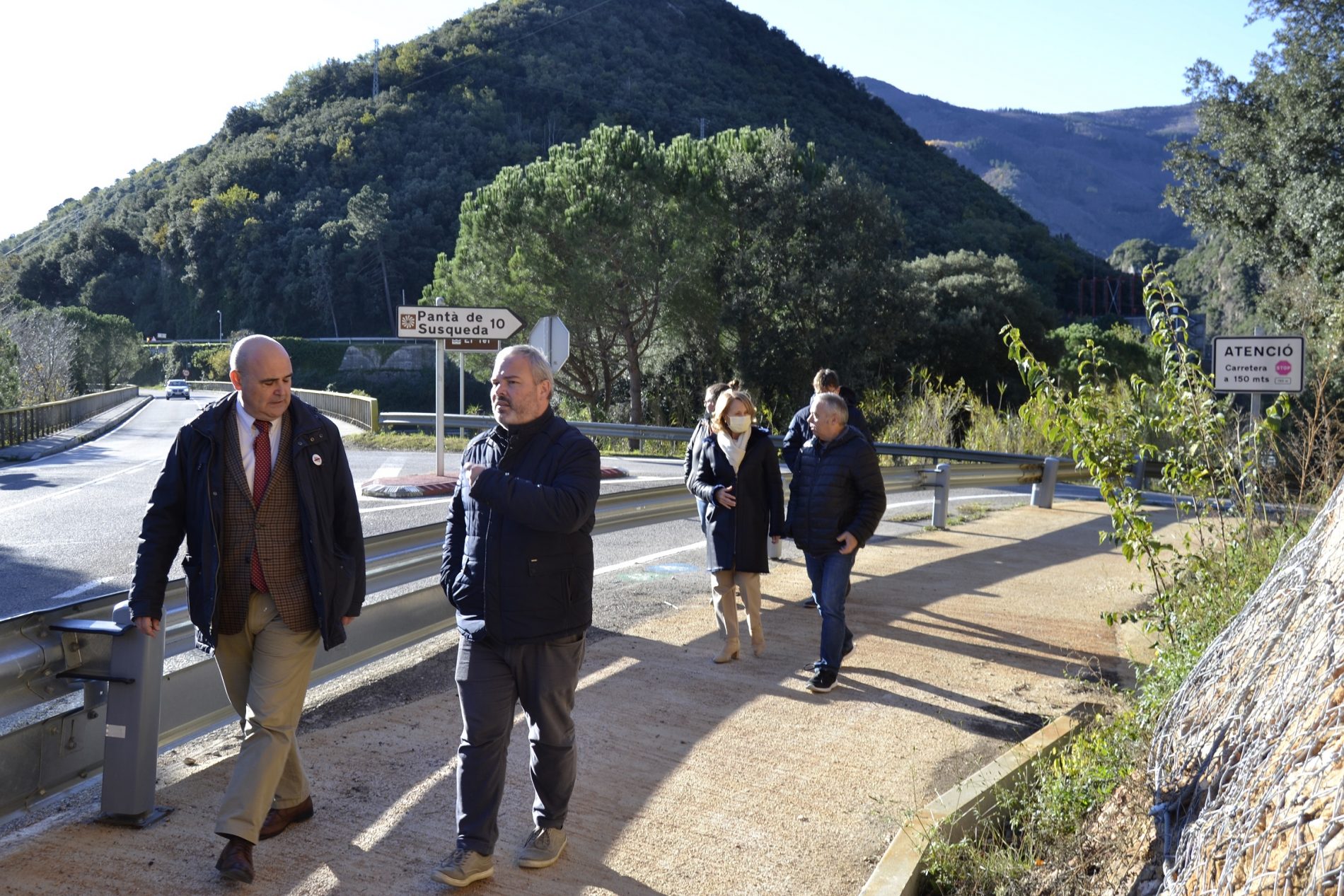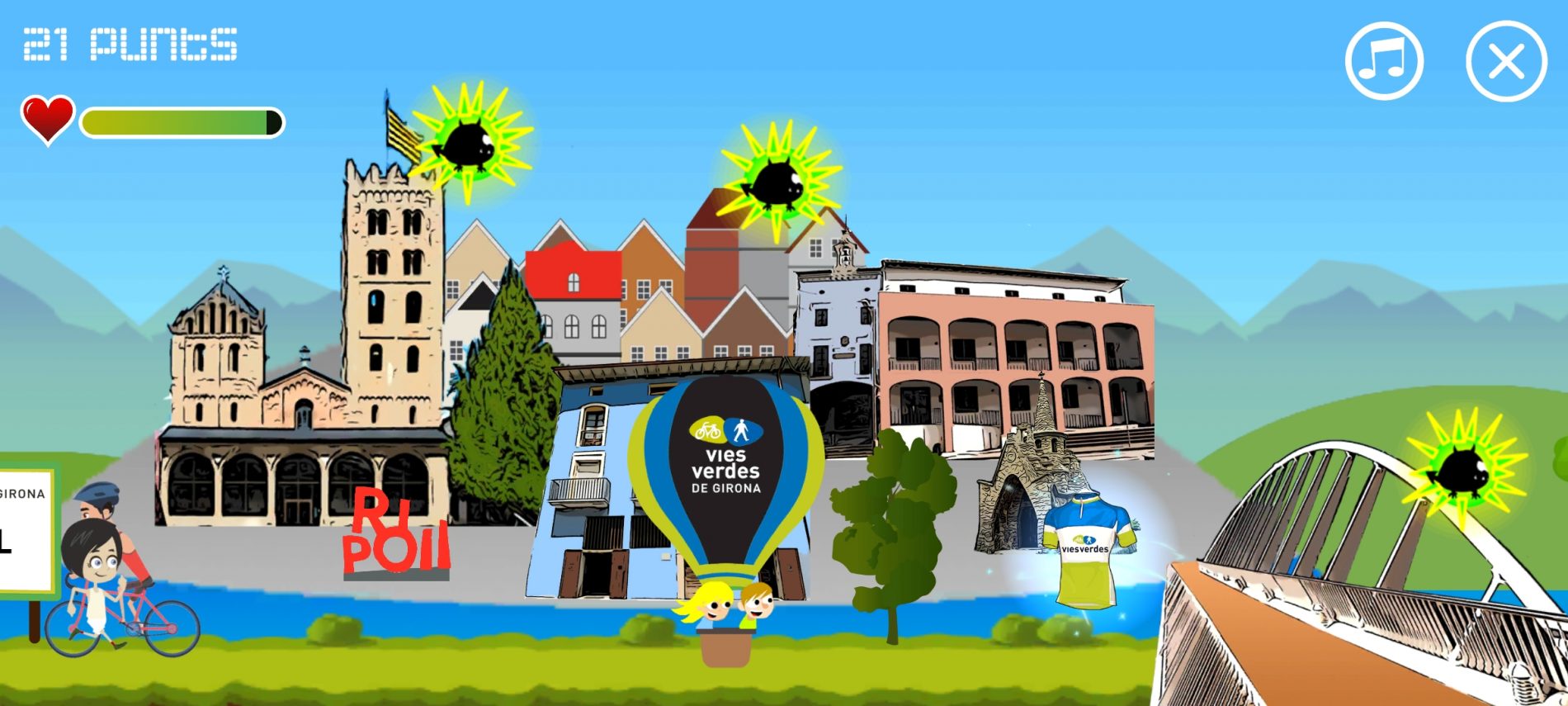The Secret of the Banks of the river Ter in BESCANÓ
The municipality of Bescanó covers approximately 36 km2 of the eastern foothills of the Guilleries massif, and it includes the villages of Bescanó, Estanyol, Montfullà and Vilanna, as well as the hamlet of Pla de Trullars and the Mas Llunès housing estate. The characteristic terrain and the large forest area have led to the built-up areas being concentrated on the gentler slopes near the River Ter or in the depression of La Selva. Lying to the west of the plain of Salt, Bescanó has benefitted from the River Ter’s water for centuries. Proof of this is the Monar irrigation channel, which as early as the eleventh century and apparently thanks to the Counts of Girona, irrigated the municipality’s fields. Use is also made of the water from Bescanó’s irrigation canal, known as Rec Gros, branching off the right bank of the Ter, downstream from the Bonmatí colony, which irrigates the northern part of the municipality. In the old days there used to be a ferry boat across the River Ter linking Bescanó and Sant Gregori. The last boatman, Varisto, operated the ferry across the river until 1974. The boatman’s boarding house still stands at the foot of the landing stage to this day.
Local points of interest not included in the Secret
- The church of Sant Llorenç. A Romanesque church that has undergone numerous transformations. Having been found to be too small, a new church designed by the architect Ros Casadevall was consecrated and dedicated to Our Lady of the Assumption in 1963.
- The hill known as Puig de la Torre or Can Cendra contains the ruins of an Iberian settlement from the fourth-third centuries BC, where pottery, coins, iron objects and Hellenistic-style jewellery have been found.
- Vilanna is a small hamlet in the western edge of Bescanó, of interest for its small church of Sant Mateu, Romanesque in origin and rebuilt in 1678. The little village is particularly beautiful for the way it blends in with its surroundings: a small church with a lofty bell tower, topped with a pyramid and surrounded by cypress trees to welcome the visitor.
- There are several chapels in the municipality, including Santa Anna, Santa Margarida, Sant Sebastià and the Romanesque chapel of Sant Bartomeu, near Can Pol de Baix farm.
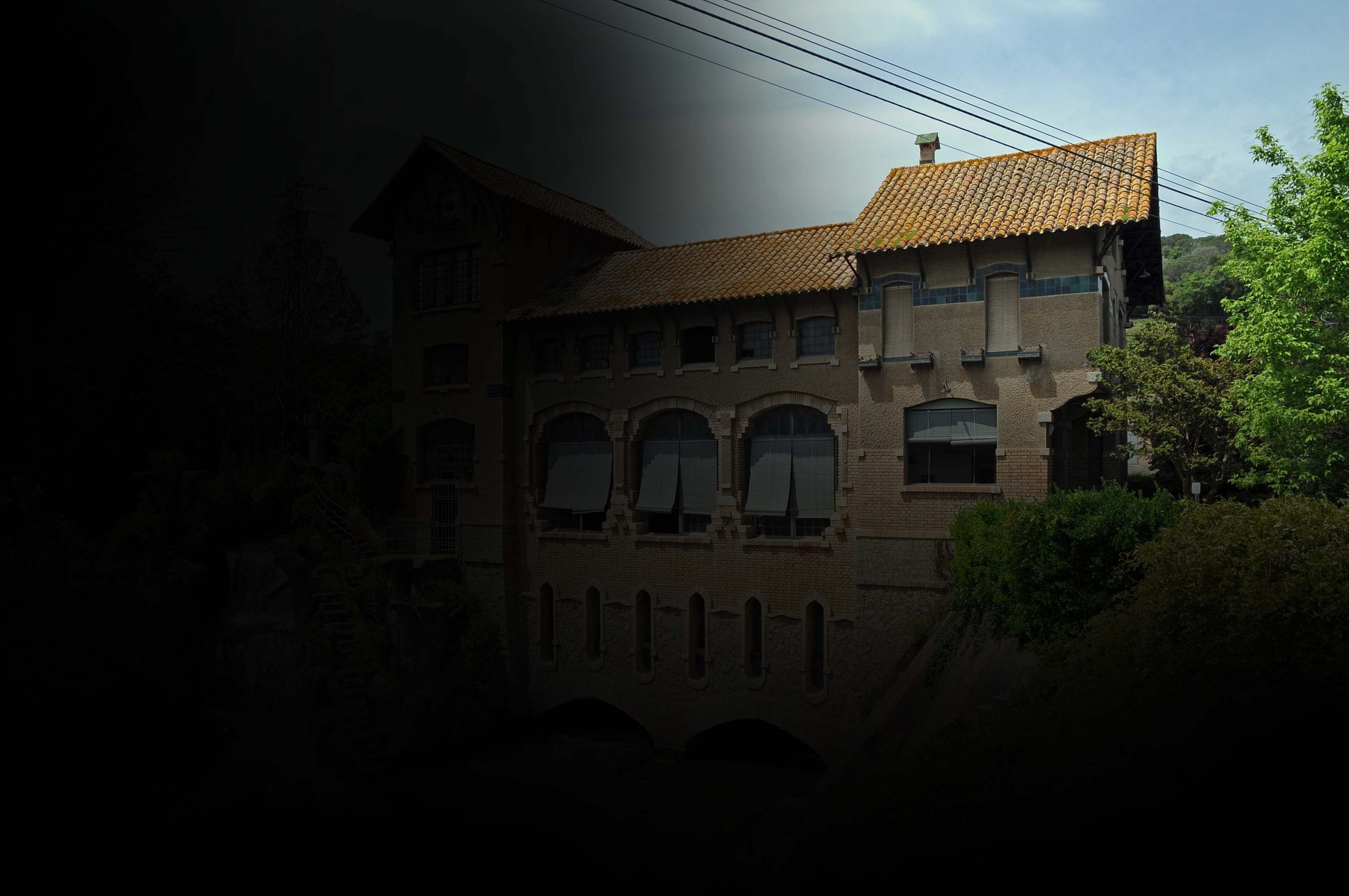
Kilometers 3.9 km (existing tram) - under construction
Difficulty Minimum
Pavement Nature route
Transport walk or bike
Secret type River paths
The banks of the River Ter in the municipality of Bescanó give us the chance to discover the Ter as a river whose water has long been used for both irrigation and to drive mills, to generate electricity for three hydroelectric power stations and to power the old Grober textile factory. The itinerary also takes us through river countryside with its characteristic vegetation and wildlife. The route starts off in the areas of arable land in the north of the municipality, but riverside vegetation is predominant throughout the route. Here, shade is provided by the riverbank trees, such as alders, willows and planes. The types of wildlife found here are all species connected directly or indirectly with water, which find food or refuge in riverside habitats. You can see such birds as kingfishers, cormorants, night herons, mallards and grey herons, as well as salamanders, frogs, otters, turtles and different fish, like barbel and trout.
1. Joga’s weir
Joga’s weir is made of concrete, half-moon shaped and of a considerable size. However, as it is not very high, the water often overflows. The Grober canal branches off to the left. The calm water before the weir, with the aquatic vegetation and different habitats that compose the area, makes it a suitable nesting place for different species of marshland birds, including ducks, shags, wagtails, kingfishers and herons, and a good place to see turtles sunbathing. In the old days it used to be a bathing area, and it was also used as a place for crossing the river on foot.
2. The Grober canal overflow channel and weir house
This canal is some 1,200 metres long, built with riverbank and concrete walls in parts and runs through the Bescanó plain, to the west of the village, between Joga’s weir and the Grober power station. Water from the Berenguer power station drainage channel flows into it and it has outlets used for irrigation. It flows past Benages mill, before coming to the power station. Built in former times, it owes its current appearance to the building work carried out on the Grober factory in 1893. Along the way you cross the overflow channel, which becomes flooded and impassable when the river swells, so be careful at this point in the route.
3. The cart crossing
The Ter has always been an obstacle for the inhabitants on both sides of the river, there were not many mills and people had to find places to cross the Ter. The cart crossing was one of these easily accessible places that people used to cross the Ter between Sant Gregori and Bescanó and to get to the mill to grind the grain.
4. The watermill
Benages mill was a property passed down from feudal times until the Counts of Berenguer finally came by it through marriage. There is written documentation of the flour mill’s refurbishment and enlargement from 1761. The project includes plans of the mill building and a sketch of the mill channel, of the Monar irrigation canal and of the villages of Bescanó and Salt. The present watermill was bought, along with its water rights, in 1890 by Grober, which built its textile factory nearby.
5. Berenguer palace
The Counts of Berenguer’s palace is a manor house made up of different adjacent buildings. It is now protected as a Cultural Site of Local Interest. The house dates back to 1603. During the eighteenth century, the manor was the administrative centre for the feudal properties inherited by the Benages. In the nineteenth century the building was refurbished and known henceforth as “Cal Conde”, the Count’s house. The private chapel-mausoleum adjoining the house is a round building with an apse and two side chapels. It was built on the Countess’s request, to house the remains of the Count, who died in 1879.
6. The Grober factory
In 1893 Grober i Cia. Societat en Comandita bought the eighteenth-century Benages mill, which had water rights from the Ter, and installed a hydroelectric power station at the waterfall to supply electricity to the Grober, S.A. textile factory in Girona. Next to the power station the Bescanó textile factory, a subsidiary of the Girona one, was built for wool spinning and cotton combing. The brick chimney towers over the old factory structures. The rest of the buildings are now mainly ancillary to the factory for employee services: housing for technicians and management, a crèche and premises for Cinema Unió, although the company’s production system never operated as an industrial colony.
7. The ferry boat
The Bescanó boat crossing was used to cross the river and make communications possible between Bescanó and Sant Gregori. The first document recording the Bescanó boats, used at the mill and the weir, dates from 1741. Attached to the rope cable the boat could transport a cart, but it could also be used as a floating platform to transport stone for the mill weir. In the twentieth century, the last boatman, Evarist Anton, known as “Varisto”, built the La Barca boarding house. The flood in 1940 – when the water level rose to 105 – washed away the boat and the house. In 1974 the Bescanó cable ferry made its last crossing.
8. The banks of the Ter (link with the future footbridge) and a great viewpoint over the Ter and its riverside habitats
The River Ter is wide and stately as it passes through the village of Bescanó, lined with riverside woodland featuring willows, alders and a few tree plantations characteristic of this sort of woodland. In these flat areas the Ter becomes a broad strip with the occasional oxbow lake contributing notably to the conservation of biodiversity with stretches of calm water that are home to many species of river wildlife. This is also the place where it is planned to build a footbridge to connect Bescanó with the neighbouring village of Sant Gregori and the Llémena valley.
9. Berenguer power station
The art nouveau power station was built by the architect Joan Roca i Pinet in 1916. Its construction was commissioned by the Count of Berenguer with the intention of adding to the electricity production for the high-voltage power line linking the Vilanna power station with Palamós. It also supplied the villages along its 50-km course. The huge figures decorating the overflow channel were the product of the imagination of one of the works bricklayers. One of them, an art nouveau-style dragon, is now the village’s tourist logo.

